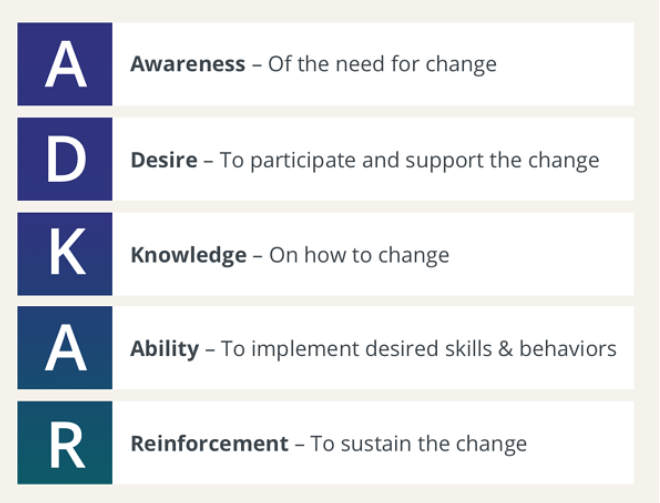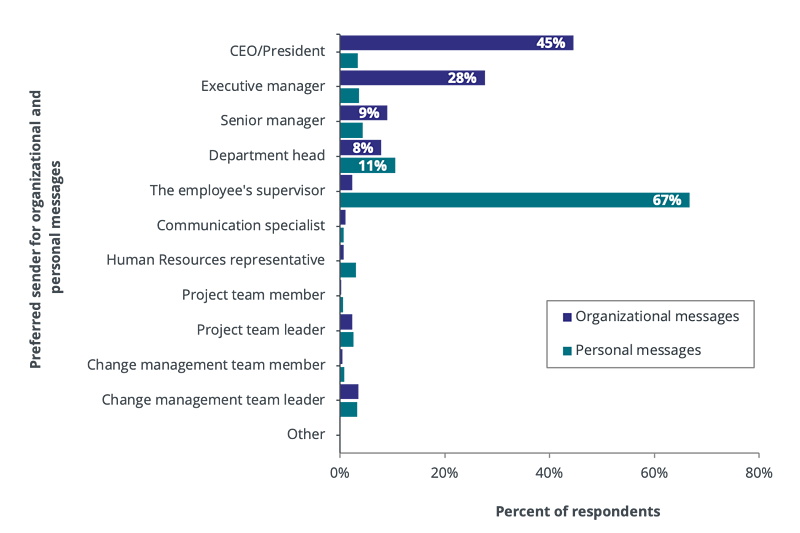
Applying Change Management stage 1: Awareness
In this blog series we will discuss how ADKAR, the model for individual change, can help you to engage others in implementing better change management in your change projects.
If you are just beginning to implement change management on a project, it’s important to remember that for many people participating, change management is a foreign concept. The effective application of change management principles and tools is itself a change for them.
Individuals are undergoing a change themselves—the change of applying effective change management. Because they are going through the change as individuals, we can use the ADKAR Model to examine the key steps, messages and information required to get change management team members successfully through the personal change (remember, applying effective change management is the change we are talking about). Here’s how the ADKAR Model can help.
ADKAR and ”Applying Effective Change Management”
Any successful change begins with the answer to one of the most basic questions about change: Why? It is human nature to want to understand the reasoning behind an action or a required change. The first building block of the Prosci ADKAR Model, awareness, represents this thirst for understanding.
Any change takes place one individual at a time. Change also takes place sequentially as each individual moves through the phases of the ADKAR Model. The questions, talking points and actions below highlight how you can address the need to apply effective change management in your organization at each stage of the ADKAR Model.

Awareness of the need to apply effective change management
Asking your teams to apply change management first requires making the need for change management concrete. When someone is asked to change the way they do things (i.e., apply change management on your next project), the first response is usually, ”Why?”
At the Awareness, employees will ask:
”Why is change management necessary and why now?”
”What’s wrong with the way we are implementing changes today?”
”What will happen if we don’t use change management?”
Talking points and actions you can take to build Awareness:
- Highlight past failures or transition problems in the organization where change management was not effectively applied. This creates a common reference point for your team, so the messages going forward have more impact. Talk about the impacts of those past changes and which key steps were missed.
- Provide concrete examples of the risks of poorly managed change. Costs and risks of poorly managed change include lower productivity, loss of valued employees, decreased morale, slow adoption, passive resistance (including lack of commitment), active resistance (including sabotage), and possible failure of the change.
- Share change management research findings. Prosci’s Best Practices in Change Management report reveals several key points that can help you support Awareness. For example, the number one thing teams would do differently on their next project is involve change management earlier during the project planning phase. Practitioners also identified customized and scaled change management activities as a key component of an effective change management strategy.
- Offer foundational resources. Prosci’s book, Change Management: The People Side of Change, dedicates the first chapter to building the case for ”why manage change.” It’s a great foundation for anyone new to managing the people side of change. Our Resource Center also offers a variety of free ”getting started” articles, webinars, blogs and downloads.
- Bring in a leader to advocate for the use of change management. Our research shows that executives and senior leaders are the best senders of messages related to the business need for change. This is true for applying change management as well. Having an executive speak to your team about the importance of change management for the organization will be a key success factor.
